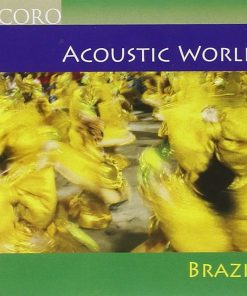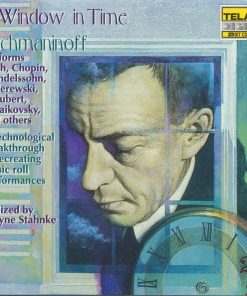BEETHOVEN: SYMPHONIES 4 & 6 (VOL.1) – Jan Willem de Vriend, The Netherlands Symphony Orchestra (HYBRID SACD) CHALLENGE
$ 2,99 $ 1,79

A refreshing new recording of the Beethoven symphonies (volume 1), through the eyes of conductor Jan Willem de Vriend and his orchestra. De Vriend’s name as a symphonic conductor is emerging fast now in the music world, and this first volume of the Beethoven series is a fine musical signature, with which he and his musicians perpetuate themselves.
In the linernotes with this CD we can read: If you want to perform his symphonies and surely if you want to record them, you must make a thorough study of Beethoven’s personal situation and that of the world around him. Here we can only set down a few short brushstrokes on an enormous empty metaphoric canvas. A canvas that must be filled completely, preferably painted true to life right down to the smallest details, using a fantastic palette of colours. When it is finished, we will see Beethoven, situated in his time. The painting will tell a story.
With this new Beethoven cycle conductor Jan Willem de Vriend, together with the Netherlands Symphony Orchestra, ventures to tell a new story. His story. With enormous passion and enthusiasm, he has immersed himself in the life and work of Beethoven. To gain the best possible understanding of Beethoven, he says, you must know something about the people around him: for example, his teachers Albrechtsberger and Neefe, who watched his career. You need to know what it was like in Bonn when he grew up there. You need to know that his grandfather enjoyed trading wine and that Beethoven therefore took pleasure in allowing himself to be paid in wine, for example by his publisher. You need to know where his roots are. You need to know the music of his pupils, such as Ries and Moscheles. Jan Willem de Vriend has conducted the music of Beethoven, of people who composed for him, of his contemporaries. He has been working on this intensively for the past twenty years.
This recording of the Fourth and Sixth symphonies is an interpretation of Jan Willem de Vriend and his orchestra, belonging to a certain moment in time and recounted entirely in sounds. It is a story understood in detail and given shape in masterly fashion.

01. Symphony no. 4 op. 60 in B flat major: Adagio – Allegro vivace 11:45
02. Symphony no. 4 op. 60 in B flat major: Adagio 08:19
03. Symphony no. 4 op. 60 in B flat major: Allegro molto e vivace 05:41
04. Symphony no. 4 op. 60 in B flat major: Allegro ma non troppo 07:10
05. Symphony no. 6 op. 68: Allegro ma non troppo ? Angenehme, heitere Empfindungen, welche bei der Ankunft auf dem Lande im Menschen erwachsen 11:30
06. Symphony no. 6 op. 68: Andante molto moto ? Szene am Bach 11:49
07. Symphony no. 6 op. 68: Allegro ? Lustiges Zusammensein der Landleute 05:10
08. Symphony no. 6 op. 68: Allegro ? Donner. Sturm 03:51
09. Symphony no. 6 op. 68: Allegretto ? Hirtengesang. Wohltätige, mit Dank an die Gottheit verbundene Gefühle nach dem Sturm 09:12
Fast Shipping and Professional Packing
Due to our longstanding partnership with UPS FedEx DHL and other leading international carriers, we are able to provide a range of shipping options. Our warehouse staff are highly trained to pack your goods exactly according to the specifications that we supply. Your goods will undergo a thorough examination and will be safely packaged prior to being sent out. Everyday we deliver hundreds of packages to our customers from all over the world. This is an indication of our dedication to being the largest online retailer worldwide. Warehouses and distribution centers can be located in Europe as well as the USA.
Orders with more than 1 item are assigned processing periods for each item.
Before shipment, all ordered products will be thoroughly inspected. Today, most orders will be shipped within 48 hours. The estimated delivery time is between 3-7 days.
Returns
The stock is constantly changing. It's not entirely managed by us since we are involved with multiple parties such as the factory and our storage. The actual stock can fluctuate at any time. Please understand it may happen that your order will be out of stock when the order is placed.
Our policy is valid for 30 days. If you haven't received your product within 30 days, we're not able to issue either a return or exchange.
You are able to return a product if it is unused and in the same condition when you received it. It must also still remain in the original packaging.
Related products
MUSIC CD
MUSIC CDS
MUSIC CD
MUSIC CDS
MUSIC CDS
MUSIC CD































































